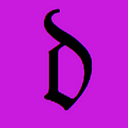Member-only story
A for Arial
The curious history of a font from the heyday of Microsoft Word
Here’s one for Ripley’s Believe It or Not: Arial was once called Sonoran San Serif.
How different would the user experience of Microsoft Word been if the name had not been changed? Would we even have known about Arial if it hadn’t been one of the very first fonts on offer in the drop-down menu?

Arial was designed in 1982 by Robin Nicholas and Patricia Saunders for the type foundry Monotype. It was first packaged for the personal computer with Windows 3.1 in 1992 (along with a much more important feature: Minesweeper). As a sans serif font, it also described as “grotesque” (for a meandering discussion on why fonts without serifs are called grotesque you can read my post on “The Serif”). Today, Windows people, I am reliably informed, prefer Calibri. I have no idea about this because I came into some money a decade ago, and have been a Mac and Scrivener user since then. However, I just did a quick check, and can confirm that the default font in Pages is Helvetica. Curiouser and curiouser, dear reader, for as we will soon find out, this is no random occurrence.
The typographer Mark Simonson recounts the evolution of the typeface in a wonderful entry in his online journal titled “The Scourge of Arial”. Simonson argues that Arial’s ubiquitousness is not due to its aesthetic quality but a reflection on the all-pervasive influence of Microsoft. In his opinion, Arial is “little more than a shameless impostor”, a cheap-low rent fake designed to mimic Helvetica. Scandal, Mr. Darcy!
Helvetica is one of the most influential typefaces of this century (more on that when this series gets to H for Helvetica). It was the default font of choice for graphic designers and it encapsulates the ethos of the age (it is still used widely in the art and fashion industries). D. Stempel AG and Linotype re-designed and digitised Neue Helvetica and updated it into a cohesive font family, so that it could be used for the revolutionary new computer typesetting machines. The demand for the typeface was manic.
This naturally lead to Linotype’s competitors attempting to muscle into the market through clones. According to Simonson:
“Many type manufacturers in the past have done…
